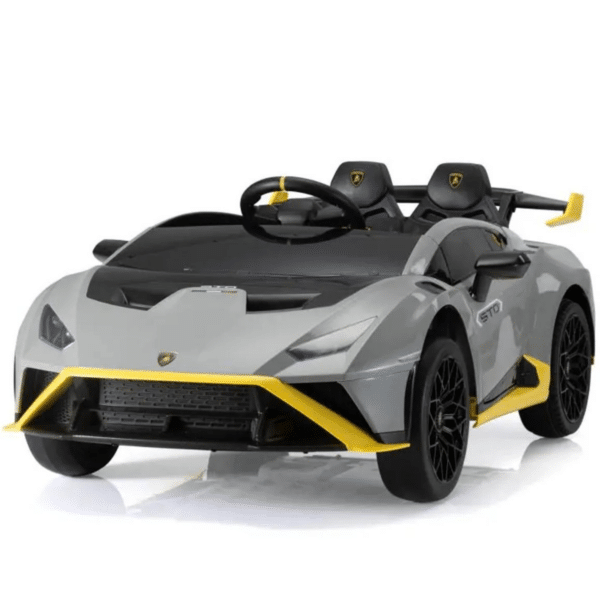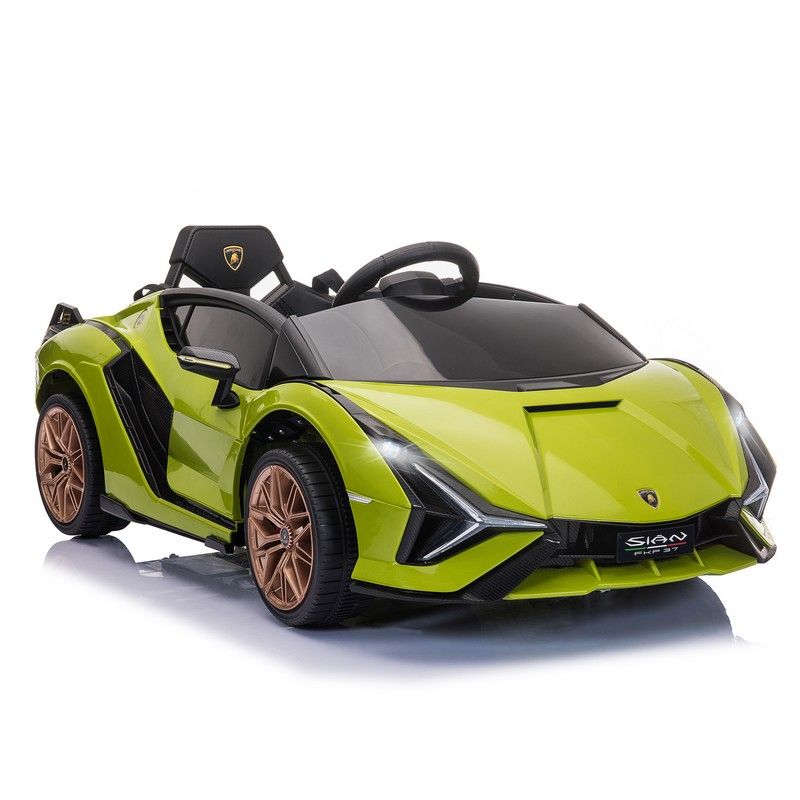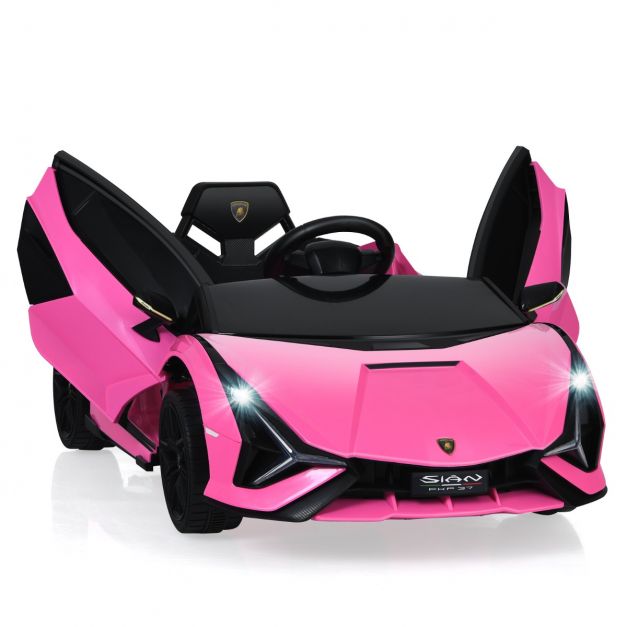Handy Info For Selecting Remote Control Childrens Cars
Wiki Article
What Are The Advantages And Disadvantages Of A Remote-Controlled Electric Cars For Children?
There are a variety of benefits and advantages of remote-controlled and electric cars for kids. Each one caters to a distinct set of preferences and needs. Here are a few advantages that remote-controlled and electric children's vehicles provide.
Independence - Electric cars for children allow them to explore on their own, and with an increased sense of autonomy.
Motor Skill Development. Driving an electric vehicle requires the use of motor skills such as steering, accelerating and braking. These help children develop coordination and spatial awareness.
Realistic Experience. Kids' electric automobiles are typically constructed with realistic features like working headlights, horns and engine sounds. This gives you an engaging and immersive experience.
Outdoor Play - Electric kids’ cars are ideal for use outdoors, on surfaces such as roads, sidewalks and playgrounds. They let children explore, play and learn outdoors.
Physical Activity - Driving an electric car is a physical activity because children use their feet and hands to operate the controls encouraging movement and exercising.
The benefits of remote-controlled children's automobiles
Remote Controlled Kids' Cars Parents are able to supervise their children's activities and offer assistance. This provides an additional layer of security.
Guided Learning: Parents may utilize a remote control to help teach their child to safely operate the car, gradually transitioning the child to driving on their own when the child is confident.
Children are able to operate remote-controlled vehicles either manually or with a parent's remote control. They are flexible and versatile, and they can accommodate different levels of skill and situations.
Safety Parents can take action to prevent accidents or collisions through remote control. Remote controls can stop the car or steer it away from obstacles or hazards and increase safety while playing.
Parents and children can play and interact together with remote-controlled cars to explore the features of the vehicle.
In the end, deciding between an electric car or a remote-controlled vehicle for your child depends on many factors, including the child’s age, their ability level as well as their personal preferences and the supervision provided by the parents. Electric vehicles offer freedom and realistic experiences in play, while remote-controlled cars provide safety, guidance, and interactive games for children and their parents. Have a look at the recommended Mercedes kids car for website examples including car toy toy, childs electric ride on car, childrens digger, kidscars, kidscars, ride electric car, ride electric car, car toy toy, car electric ride on, electric ride along car and more. .

What Kind Of Maintenance And Assembly Needs Are There For Kids' Ride-On Vehicles?
Assembling and maintaining ride-on toys for children is essential to ensure their safety, functionality and longevity. These are the assembly requirements and maintenance requirements for children's ride on vehicles.
Most cars that ride on are partially assembled at the time of arrival and require some assembly. Attaching the wheel, steering wheel seats, and other components to the ride-on vehicle as per the directions from the manufacturer is the most common method.
Follow the assembly instructions closely to ensure all components are properly aligned and securely connected. For final assembly, use the tools and equipment supplied.
Cleaning -
Regular cleaning is necessary to keep the ride-on car running at its peak and performing effectively. Use a soft, spongy cloth or sponge dampened with mild soap and water to wash off the exterior surfaces, taking off dust, dirt and debris.
Attention should be given to areas prone of accumulation such the wheels, tire, and undercarriage. Utilize a toothbrush or brush to scrub hard-to-access areas and eliminate stubborn grime.
Beware of harsh cleaners and water jets that have high pressure that could damage the paint and electronic components of your ride on the car.
Battery Care
To ensure performance and prolong the life of a battery that is a ride-on, it is vital that you take proper treatment of your battery. These guidelines will help you take care of your battery.
Fully charge the battery prior to use and every time to extend the runtime.
Beware of overcharging the battery or allowing the battery to be connected to the charger for long periods, as this can cause damage to the battery and decrease its life span.
When not in use When not in use, keep the ride-on car and battery away from direct sunshine or extreme temperatures.
Check the battery terminals periodically to see if they are damaged or corroded. Clean them when necessary by using the help of a wirebrush or a terminal cleaner.
Replace the battery if it no longer holds an charge or is showing evidence of damage or degrade.
Tire Maintenance -
Regularly check tires for signs that they're losing air pressure, damaged or worn. Inflate the tires according to the recommended pressure by using the bicycle pump or an air compressor if needed.
Inspect the tread pattern to look for debris or other foreign objects that could cause flats or punctures. Remove obstructions, and replace damaged tires or repairing them when required.
Lubricate wheel bearings and axles on a regular basis to lessen friction.
Sometimes, repairs and replacements are needed.
Despite routine maintenance, cars that ride on might require periodic repairs or replacement parts because of wear and wear or damage caused by accident.
Keep an eye out for signs of malfunction or deterioration for unusual sounds or power loss or erratic behavior. Check the manufacturer's guidelines or call customer support for guidance on troubleshooting and repair solutions.
To avoid further damage replace worn-out or damaged parts as soon as possible to ensure safety and functionality.
Follow these guidelines to keep your child's ride-on car and provide hours of fun and safe play for them. Take a look at the recommended JCB ride on digger for site examples including electric ride along car, childrens electric ride on, toy in car, ride on car, toy in car, lambo toy car, toy a car, a toy car, digger ride, toy cars and more. .

What Kind Of Children's Remote Control Cars Are Available? What Are The Benefits And Disadvantages?
Remote control cars for children are also referred to as RC cars or remote-controlled automobiles, come in various sizes and styles. They also come in a variety of price ranges to suit various budgets and preferences. This article will give you an overview of types sizes, prices and types of children's remote controlled cars and their pros and cons.
Electric RC Cars – Battery-powered remote-controlled cars that are suitable for outdoor or indoor use. The cars are available in various designs, including trucks or buggies.
Nitro RC Cars – Gas-powered remote-controlled cars that offer more power and performance however, more expertise and maintenance is required to operate. They're typically bigger and cost more than electric RC vehicles.
Scale models are replicas of real-world vehicles such as trucks and cars. They are also controlled remotely. Scale model sizes range from 1-10 to 1--24. Larger models have more details and greater realism.
Sizes -
Remotely controlled children's cars come in various sizes. They range from tiny miniature replicas to larger-scale replicas. The size of a vehicle will affect the performance of it and its speed.
Micro-sized cars, which are lightweight and small, are ideal for indoor use and also by younger children. Larger-scale models offer greater power and durability which makes them suitable for off-road racing in the outdoors and for outdoor driving.
Prices
The prices of remote control cars for children differ based on various factors, including dimensions, features, brands and the build quality.
Small electric vehicles can be bought for between $20 and $100 bigger electric or nitro-powered RCs may be purchased for $100-$500 or more.
Scale models as well as high-end hobby-grade RC cars range from several hundred dollars up to 1000 dollars, based on the amount of detail and speed.
Pros and Pros and
Pros -
Adults and kids can both enjoy the thrills and excitement of remote-controlled cars.
Skills development Learning to drive an RC vehicle can help children improve their spatial awareness as well as hand-eye coordination.
Social Interaction: RC cars are great for social interaction with family and friends.
Aftermarket parts such as upgrades, accessories, and other products from the aftermarket can be used to modify numerous RC cars and improve their performance.
Cons
Cost - Top-quality remote controls for children's cars can be expensive particularly those with hobby-grade sophisticated features.
Learning Curve - Operating an RC car requires practice and expertise, and smaller youngsters may have difficulty with the controls initially.
Maintenance Regular maintenance is essential for RC vehicles like cleaning, lubrication, and repairs.
Safety Risks RC cars pose safety hazards including falls, collisions and electrical hazards when not operated under adult supervision and with proper care.
The best remote control kids cars provide an educational and fun experience to children of all ages. When selecting the best car for your child it is important to be aware of a range of aspects, including the size, cost features as well as safety. Hobby-grade RC cars may be more suitable for older children and enthusiasts, while simpler models are ideal for younger children and beginners. Follow the recommended kids cars kidscars.co.uk recommendations for more recommendations including childs car toy, childrens ride on, pedal car, kiddies cars, electric two seater cars, car on ride, electric car ride, car toy toy, childs electric ride on car, ride of car and more. .
